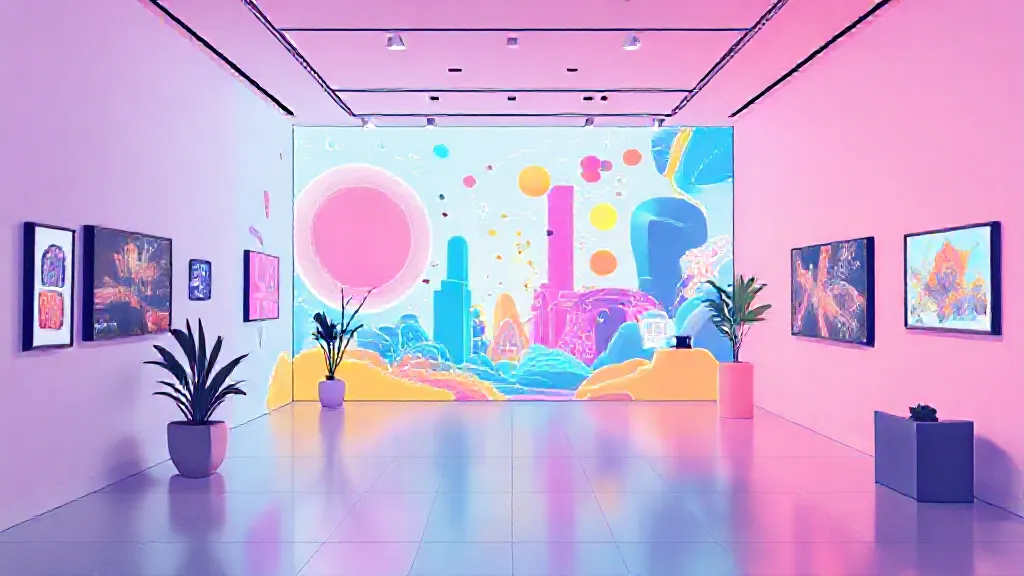The intersection of art and technology has evolved dramatically over the years, creating innovative ways for artists to express their vision and engage with audiences. From the advent of photography in the 19th century to today's digital installations and virtual reality experiences, technology has continually transformed the artistic landscape. This article delves into how contemporary artists harness technological advancements to push creative boundaries and redefine the meaning of art.
The Evolution of Artistic Mediums
Historically, artists have always sought new mediums to convey their messages. The invention of the camera opened up new possibilities for realism in art, while the introduction of digital tools in the late 20th century provided a platform for experimentation. Artists like David Hockney embraced digital painting, using iPads to create vibrant artworks that challenge traditional notions of painting.
This shift towards digital mediums has not only expanded the toolkit available to artists but has also democratized art-making, allowing more individuals to create and share their work.
Interactive Art: Engaging the Audience
One of the most exciting developments at the intersection of art and technology is interactive art. Artists like Rafael Lozano-Hemmer create installations that respond to audience movements, transforming passive viewers into active participants.
For instance, his piece "33 Questions per Minute" uses a computer algorithm to generate text in real-time, inviting viewers to engage with the artwork on a deeper level. This interactivity fosters a unique connection between the audience and the artwork, making the experience more immersive and personal.
Virtual Reality: A New Dimension of Art
Virtual reality (VR) has emerged as a groundbreaking medium for artistic expression.
Artists can create fully immersive environments that transport viewers to entirely different worlds. For example, the artist Jon Rafman has developed VR experiences that explore themes of nostalgia and digital culture. By donning a VR headset, users can navigate through Rafman's surreal landscapes, blurring the lines between reality and imagination.
This technology not only enhances storytelling but also challenges the traditional boundaries of how art is experienced.
Artificial Intelligence: The Artist's New Collaborator
Artificial intelligence (AI) is another fascinating tool that artists are beginning to embrace. AI algorithms can analyze vast amounts of data to generate unique artworks, sometimes collaborating with human artists to create something entirely new.
The famous AI program DALL-E, developed by OpenAI, can generate images from text prompts, showcasing the potential for AI to contribute to the creative process. Artists like Refik Anadol utilize AI to create mesmerizing data-driven installations that visualize complex information in stunning ways, prompting discussions about the role of technology in creativity.
Digital Platforms: Expanding Reach and Accessibility
The rise of digital platforms has transformed how art is shared and consumed.
Social media platforms like Instagram and TikTok allow artists to showcase their work to a global audience, breaking down geographical barriers. This accessibility has led to the emergence of new art movements and trends, as artists can easily connect with one another and collaborate across borders. Additionally, online galleries and virtual exhibitions have become increasingly popular, enabling viewers to experience art from the comfort of their homes.
Sustainability in Art and Technology
As the art world embraces technology, there is also a growing awareness of sustainability. Artists are increasingly using eco-friendly materials and practices in their work, often integrating technology to promote environmental awareness. For instance, the artist Olafur Eliasson creates installations that highlight climate change and encourage viewers to reflect on their relationship with nature.
By combining art and technology with a focus on sustainability, artists can inspire change and provoke thought on pressing global issues.
The Future of Art and Technology
Looking ahead, the possibilities for innovation at the intersection of art and technology are limitless. As emerging technologies like augmented reality (AR) and blockchain continue to develop, artists will find new ways to engage with their audiences and redefine artistic expression.
The potential for creating immersive experiences, interactive installations, and data-driven art will likely expand, fostering a new era of creativity that challenges traditional norms.
Conclusion: A Collaborative Future
In conclusion, the convergence of art and technology has opened up exciting avenues for creative expression. Artists are leveraging digital tools, interactive experiences, and innovative technologies to redefine what art can be.
As this relationship continues to evolve, it is essential to embrace the collaborative nature of art and technology, recognizing that each can enhance and enrich the other. This ongoing dialogue between the two realms promises to shape the future of artistic creation, inspiring both artists and audiences alike to explore new frontiers of imagination and expression.
